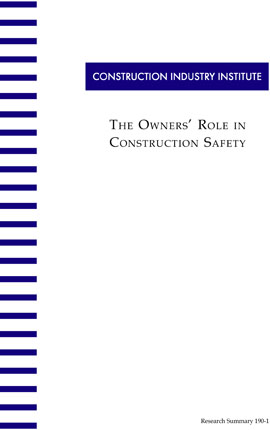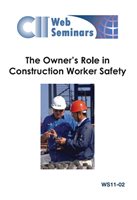
The Owners' Role in Construction Safety
Many parties are involved in the construction process: contractors, subcontractors, suppliers, designers, sureties, financial agencies, attorneys, accountants, engineers, consultants, and others. While each does not necessarily play a role in every project, one party invariably does, the facility owner. It would stand to reason that the owner would also have an influence on the safety performance actually realized on constructed facilities. But what is the nature and extent of the owner’s influence on project safety performance?
CII funded this study to determine the role and influence that owners have in the area of construction safety. The research focused on the owner’s involvement in safety management as demonstrated through the selection of safe contractors, inclusion of safety requirements in the contract, and active participation in safety during project execution. Improved safety performances are possible through the use of the following practices by owners:
- Careful selection of safe contractors.
- Contractual safety requirements.
- Proactive involvement in the safety practices of projects.
- Establishment of and funding for a safety recognition program.
- Active participation in safety training and orientation and verifying the comprehension of the training.
- Assigning a full-time safety representative on site.
The details of the research and the findings are presented in the following pages. Readers are encouraged to practice the concepts described and to set as the goal on every project that of zero accidents.


